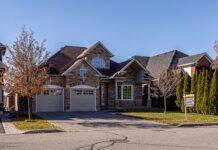Homeowners aged 62 and older collectively saw the equity in their homes increase $164.9 billion during the first quarter, according to the National Reverse Mortgage Lenders Association (NRMLA).
Currently, these seniors are holding more than $6 trillion in equity, according to the NRMLA/RiskSpan Reverse Mortgage Market Index (RMMI).
The aggregate value of homes owned by adults aged 62 and older actually increased by about $169.7 billion – but this was offset by a $4.9 billion increase in mortgage debt held, according to the report.
As of the end of the first quarter, the RMMI was at an all-time high score of 209.12, up from a score of 203.37 as of the end of the fourth quarter of 2015.
“Until recently, it seemed unthinkable that anyone would carry a mortgage into retirement, but today, millions of homeowners are still making monthly payments after leaving the workforce,” says Peter Bell, president and CEO of the NRMLA, in a release. “This is not necessarily a bad thing, but for those looking to accelerate the payoff date, they may want to consider using proceeds from a reverse mortgage loan to satisfy their existing debt. There are some misconceptions that an applicant would need to own their home ‘free and clear’ to qualify for a home equity conversion mortgage (HECM), but this is not the case.”
Research from Stephanie Moulton, a professor at the John Glenn School of Public Affairs at the Ohio State University, shows that about half of HECM borrowers use some of their loan proceeds to pay off an existing mortgage.
“Homeowners should also be aware that unlike a ‘forward’ mortgage, a reverse mortgage is a non-recourse loan, which means that a borrower will never owe the lender more than the value of the home, even if the loan balance exceeds the home’s market value when the loan becomes due and payable,” Bell explains.
The RMMI is updated quarterly and tracks back to the start of 2000.
For more, click here.










